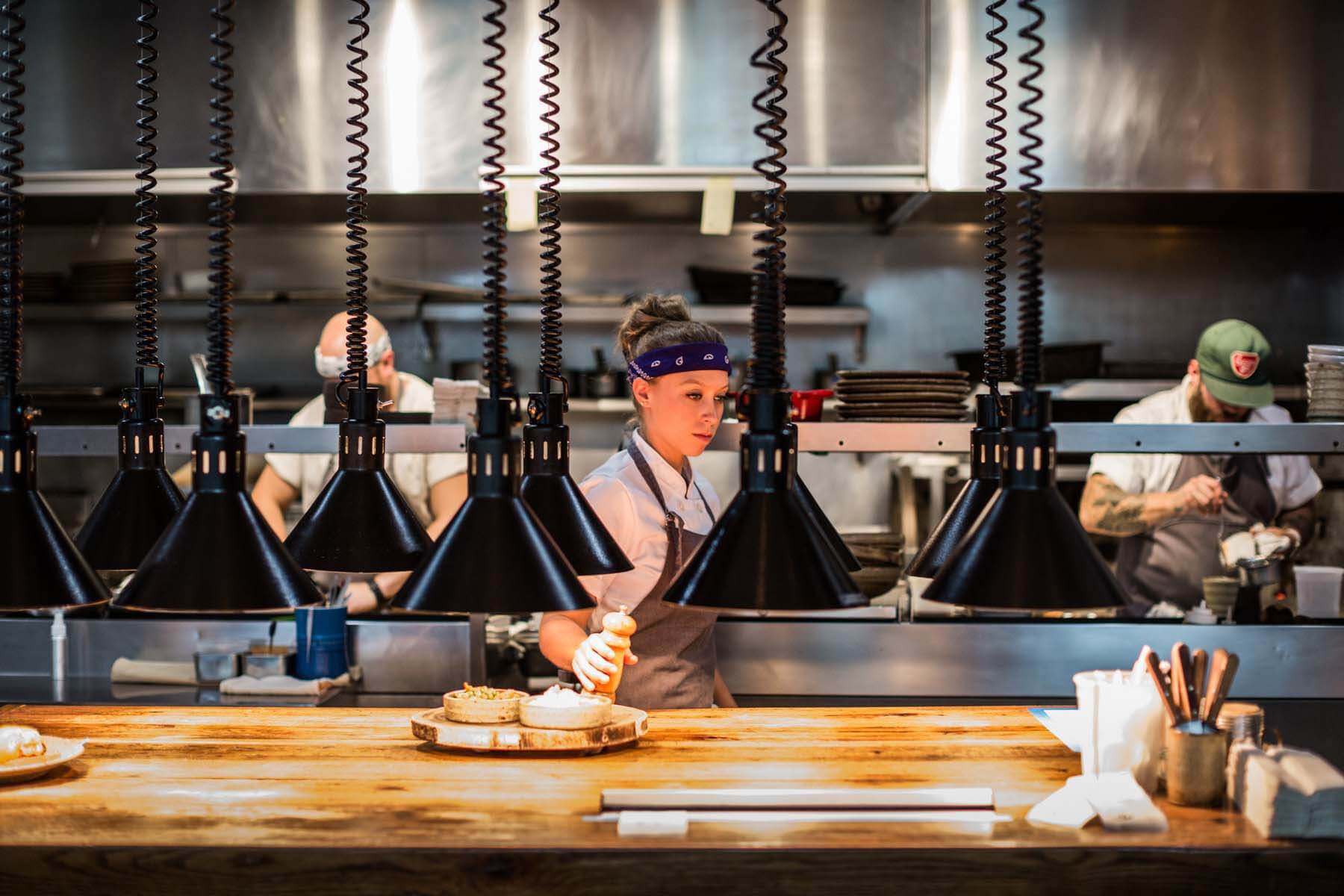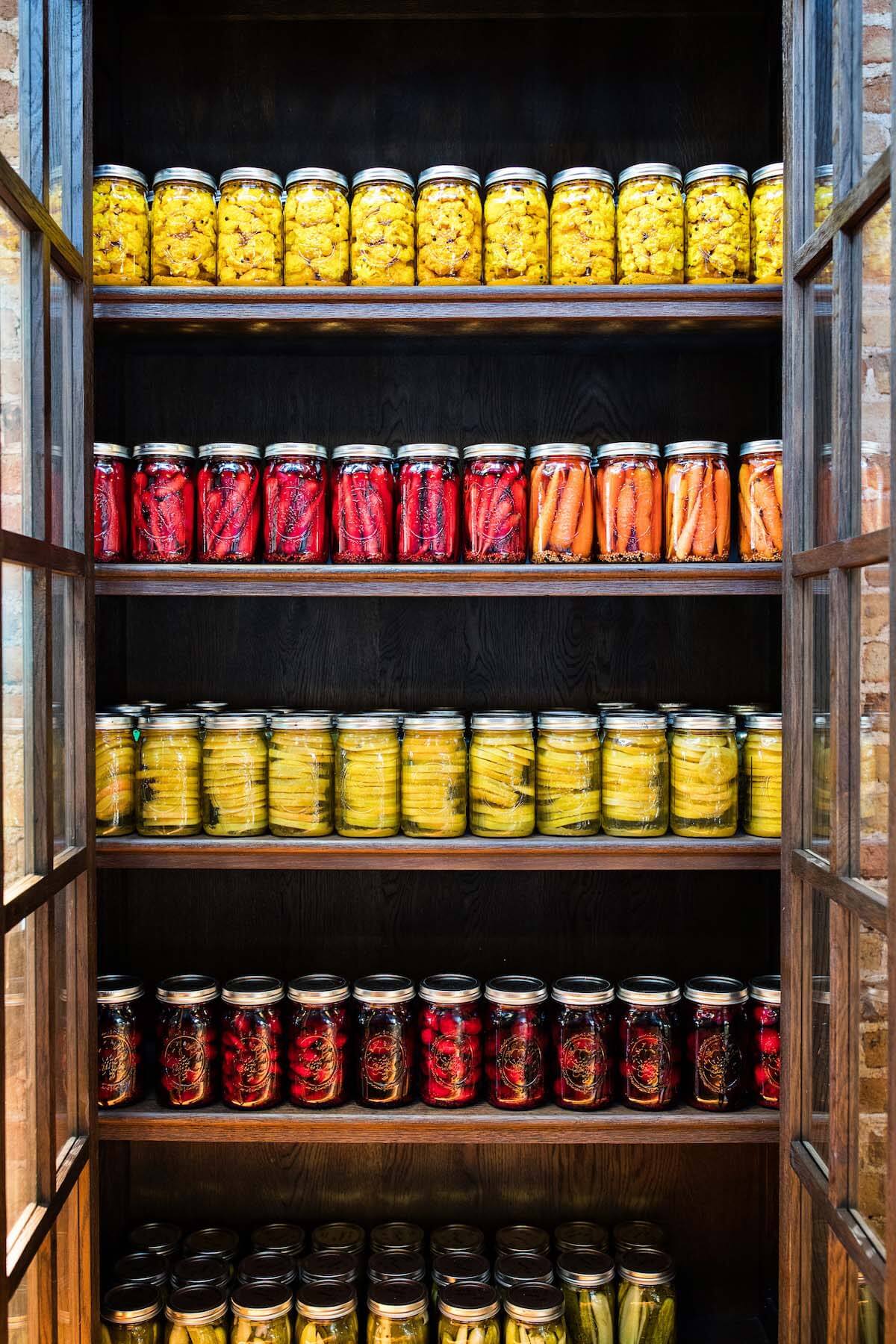Katie Coss is not afraid of some hard work. The Executive Chef of Husk Nashville commands her kitchen with quiet efficiency, (wo)manning the pass and supervising a staff of talented cooks she trained while working under the auspices of Southern chef and cookbook author Sean Brock. Husk serves brunch, lunch and dinner with menus that change daily based on the availability of the best ingredients, including some from its own on-site garden. So much of the staff’s time is spent planning menus, thinking about new dishes and experimenting with every element that will eventually end up on guests’ plates.
If that wasn’t enough to keep Katie and her crew busy, Husk intentionally limits itself to only using ingredients sourced from around the region, living by the mantra, “If it doesn’t come from the South, it’s not coming through the door.” As noble as this commitment is, it creates the possibility of Husk’s menu becoming severely limited through the winter months when fewer interesting vegetables are available from local farmers. While home cooks might be able to work their way through a wintertime CSA basket filled with kale and sweet potatoes by making a lot of soup, that’s no way to run one of the best restaurants in the country.
Katie and the Husk team have a secret up the sleeves of their chef coats, though, and it’s a technique your grandma might have been very familiar with: canning. Preserving food through pickling, canning and fermentation was a necessity for families of yore, a way to extend the bounty of the harvest to get them through the lean months. Nowadays, it has become a lost art for a generation used to finding brightly colored tomatoes imported from Chile in December and complete Trader Joe’s frozen meals ready to nuke at a convenient moment.

Katie asked Sean if she could take over Husk’s preservation program while she was still moving up the ranks in the kitchen, and she still uses many of the now-departed chef’s recipes, along with others she inherited from her grandmother. “The basic pickling recipe is simple: vinegar, sugar and water. Then you can go in a hundred different directions from there,” she explains. But pickling isn’t something where you can just “wing it.” Katie takes copious notes and logs everything she does to see what worked and what didn’t. “It’s not like cooking,” Katie says. “You can’t just add more sugar halfway through.”
Food safety is critical to the process, and Katie took an extensive eight-day class to learn the best practices of commercial canning so she could implement those rigorous procedures at Husk. “The instructors terrify you on the first day,” she recalls. “They showed a picture of seven coffins to represent how an entire family was killed by bad mushroom soup. There’s an insane wealth of details out there to help people learn about canning, and it takes time and patience. Food safety is all about sanitation and making sure the pH of your products is correct based on the weight of what you are preserving. I check every single seal and every single lid. You don’t want to store things just anywhere. It has to be a cool and dark place, and we keep our preserves all over the restaurant so I can check on them. I’m pretty leery about other people’s canned goods, so I check them too before I try them.”
She also emphasizes the importance of using the freshest produce possible to achieve the best results: “It’s not ‘this is about to go bad, so I’d better can it.’ If it’s going bad, give it to the pigs! You want to can things at their peak so you can see it for a long time. When people are tired of pumpkin in the fall, that’s exactly when I want to give them something to remember summer!”

Occasionally, Katie is inspired by happy accidents she encounters going through the restaurant’s larder. “I found some fermented pecans that I had forgotten about, so I figured out a way to change a dish on the menu to use them so we had something different for a week. We also encourage our line cooks to think about dishes and be willing to try new things. It might just be a small part of a dish or a sauce, but it helps them take ownership of what they are cooking and encourages collaboration.”
This attitude extends beyond just the savory kitchen at Husk. “We’re always thinking about pastry and our bar menu,” explains Katie. “I wanted a young man on our pastry team to be creative and think about seasonality in a new way. So we offered him some pickled strawberries and rhubarb to play with, and he came up with some really special desserts. Our beverage manager, Adam Morgan and I really wrestle over certain produce, but we always stay in communication.” Adam and the bar staff love to dabble with drinking vinegar known as shrubs to add unexpected tartness and acidity to their creative cocktails.
While Husk’s menu is ever-changing, other spots you might find the results of Katie’s preservation efforts are the pickled watermelon rinds or garlic scapes that spice up a Bloody Mary or the pickled serrano peppers that add the perfect heat to Husk’s legendary pimento cheese. Katie admits to having “a crazy obsession with peppers right now.” She loves making hot sauces in huge batches for the restaurant. “I have 200 pounds of cayennes in vinegar right now! I talked to all our farmers and told them to bring me whatever peppers they have. I love habanada peppers, which are like a habanero without the heat. You eat one and prepare for the intense heat, but all you get is the delicious bright fruit flavors.” Katie also enjoys experimenting with unexpected cross-cultural dishes like the collard green kimchi that was a popular menu item last year.

With her ingenious preservation techniques and recipes, Katie changed the traditional calendar of seasonality to allow Husk to live up to its promise to serve regional produce throughout the year, even long after the fields turned fallow. She also hopes she can inspire diners to discover the joy of canning at home. “People don’t understand what it really means to cook anymore,” she admonishes. “They don’t want to take the time, but this is a way you can utilize all of your food and enjoy it for a long time!”
**********
For more Nashville restaurant buzz, visit our local restaurant archives here!




















![“The art of preservation has been lost,” explains Katie. “Our grandparents did it for survival, but it’s coming back! A big part of what we do [at Husk] is educating our servers to offer a different perspective to our guests.” Image: Andrea Behrends Chef Katie Coss of Husk](https://styleblueprint.com/wp-content/uploads/2020/02/SB-Nash-Husk-Canning-Chef-Katie-Coss-Andrea-Behrends.jpg)